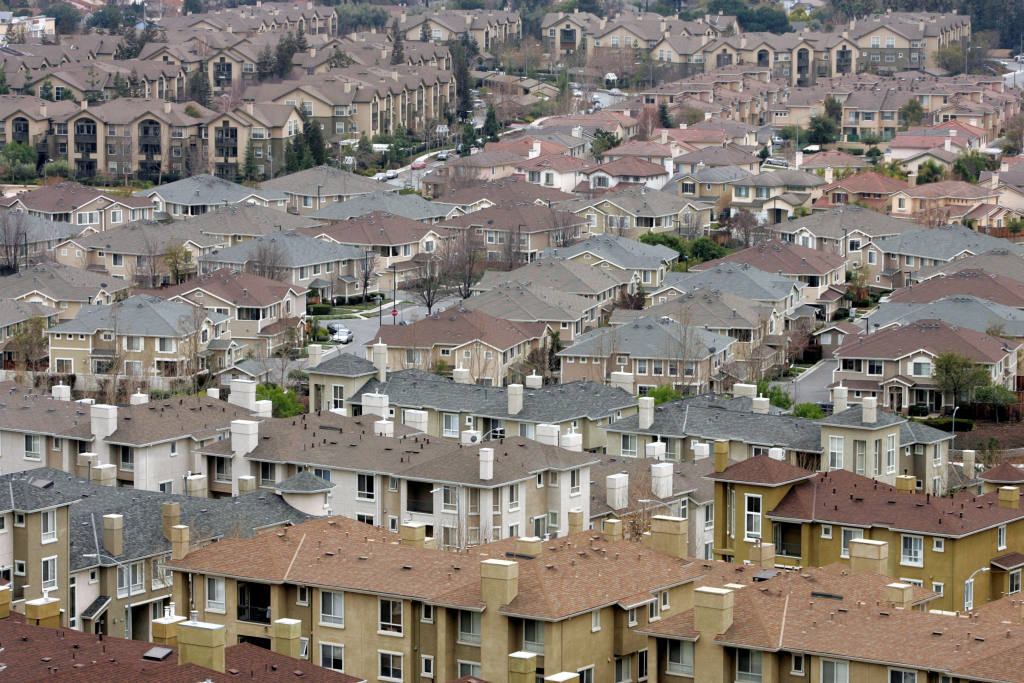California’s inland communities — rarely seen as hot properties — could become beneficiaries of the pandemic’s economic fallout as workers untethered from offices seek housing away from big cities.
Fear of population density is one factor driving a change in housing preferences. So is the ability to lower housing costs by relocating to more affordable communities thanks to expanded work-from-home policies.
The coronavirus altered California’s economy in ways few people can fathom. A peculiar real estate paradox has emerged in this recession. Unemployment has soared, yet home prices in many California markets have hit record highs. The last recession brought housing crashing down. This time, real estate appears bolstered by house hunters seeking larger living spaces and taking advantage of record-low interest rates pushed by federal stimulus.
What we know from real estate data is that inland housing markets, after six months of pandemic life, look to be among the strongest statewide. It’s an educated guess that one factor is a movement away from coastal urban hubs — though we won’t see definitive migration statistics for another year.
To help understand these economic twists, I used my trusty spreadsheet to compile a housing “desirability” index that includes six California regions among 50 large U.S. metropolitan areas. The math includes homebuying and rent trends from Zillow along with government unemployment data.
California scored relatively poorly thanks to harsh business limitations that hammered the state’s job market, officially slashing 2 million jobs. Topping the index as most desirable of the 50 metros are Louisville, Kansas City and Columbus while two legendary urban lifestyle hubs — San Francisco and New York — are tied for last place.
California’s best performers were inland metros. At No. 8 was the Inland Empire region, comprising Riverside and San Bernardino counties. No. 12 was Sacramento, the only other California market in the Top 25. San Diego was 31st; San Jose, 39th; Los Angeles-Orange County, No. 42 — then San Francisco’s bottom ranking.
Looking north
An economic tale is evolving in Northern California where cheaper options inland seem to be the draw.
Sacramento’s 5.7% home value gain to a median $444,733 tied the Inland Empire at No. 21 among the 50 metros. Compare that relative bargain with Zillow’s calculation of a San Jose home running $1.22 million and San Francisco at $1.13 million.
Rising rents can also be seen as a popularity measure from the tenant population.
Sacramento rents are up 4.3% in a year to $1,908 a month, the ninth-largest hike nationally. Meanwhile, rents by Zillow’s math have declined closer to the coast: down 3.8% in San Jose and off 4% in San Francisco.
Big swings in the number of homes for sale provide another way to gauge a region’s desirability. Fewer sellers suggest more folks want to stay put. Sacramento’s for-sale inventory fell 41% in a year, the seventh-largest drop among the metros.
That’s quite a contrast to the Bay Area where San Jose’s supply fell only 19%. In San Francisco, there were 1.5% more sellers in August than a year ago. It was the only big U.S. metro with more homes on the market — a sign that folks want out.
Sacramento’s unemployment of 11.5% was up 195% in a year. Yes, that’s an ugly number but it’s just the 17th largest increase in the U.S. Contrast that to San Jose with the ninth biggest jobless jump while San Francisco was No. 5.
Looking south
The Inland Empire fits the “big city exodus” thesis. It’s Southern California’s housing bargain, but the horrible commute to coastal work hubs previously made the region an unattractive housing option.
In the coronavirus era, the IE’s home values rose 5.7% to $400,664 in the year ended in August. Compare that with nearby L.A.-Orange County where home costs were $706,714 or San Diego at $643,903.
Inland Empire rents rose 5.5% in the past year to a median $2,097 a month for August — the third-highest rent hike nationally, by Zillow’s math. That’s a significant jump as landlords statewide struggle with unpaid rents, eviction moratoriums and growing vacancies. And it’s a sharp contrast to flat rent rates in L.A.-O.C. and just a 1.8% gain in San Diego.
Homes for sale in the IE also are running thin. The region had 47% fewer homes on the market in August, the nation’s steepest drop among the big metro areas. That drop exceeded L.A.-O.C. (down 24%) and San Diego (down 37%).
All this comes as the Inland Empire’s unemployment soared 191% in a year to 13.4% for July — yes, a horrific jump but still only the nation’s 20th largest increase. L.A.-O.C. and San Diego had the seventh- and eighth-worst jobless jumps nationwide.
Six months of pandemic life may seem like an eternity when it comes to a Californian’s daily routine. Yet economically speaking, a half-year pattern is still in its infancy. The initial push away from the large established metro areas seems like a movement with staying power if bosses continue to offer remote work.
At a minimum, the Inland Empire and Sacramento are providing California’s economy with a way to keep those folks escaping the big city, so to speak, in the state.










